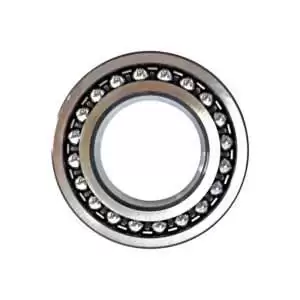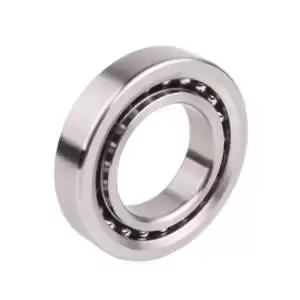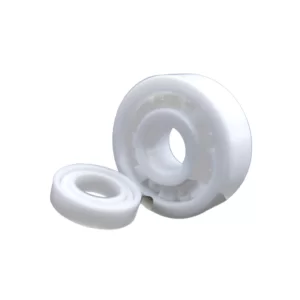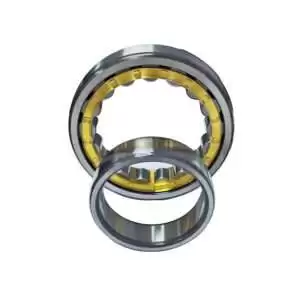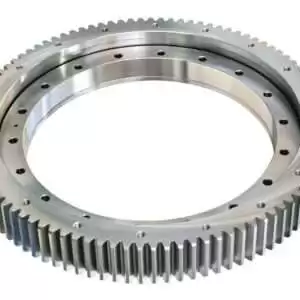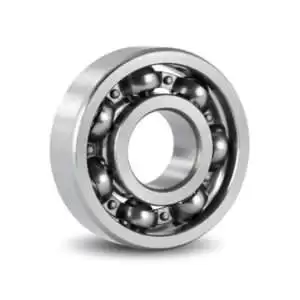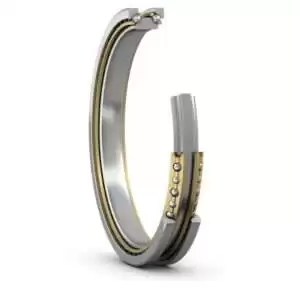Categories
-
Adapter Sleeves (9)
-
Ball Bearings (11)
-
Ball Screw Bearings (2)
-
Ceramic Bearings (27)
-
Pillow Block Bearings (4)
-
Plain Bearings (32)
-
Roller Bearings (12)
-
Slewing Bearings (43)
-
Sliding Block (3)
-
Stainless Steel Bearings (27)
-
Super Precision Bearings (6)
-
Thin Section Bearings (9)
-
Track Rollers (4)
-
Universal Joints (1)

Introduction
Definition and Purpose
Thrust bearings are key components in mechanical systems designed to support axial loads, ensuring smooth rotation and movement along a specific axis. Unlike radial bearings, which mainly bear radial loads perpendicular to the shaft, thrust bearings handle forces parallel to the shaft’s axis, preventing axial movement or displacement. They come in various configurations, including ball, roller, and fluid film bearings, each tailored to specific applications. The main purpose of thrust bearings is to facilitate efficient power transmission, reduce friction, and maintain stability in systems subjected to axial loads.
Importance in Mechanical Systems
Thrust bearings play a crucial role in a wide range of mechanical systems, ensuring their functionality, reliability, and longevity. From automotive transmissions to aerospace propulsion systems, these bearings are integral components that enable smooth operation and precise control of axial loads. By efficiently distributing forces along the shaft’s axis, they prevent wear, minimize energy loss due to friction, and maintain system integrity under demanding conditions. Without reliable thrust bearings, machinery would be prone to premature failure, decreased performance, and safety hazards, highlighting their indispensable role in various industrial sectors.
Fundamentals of Thrust Bearing Design
Load Capacity and Directionality
The design of thrust bearings is centered around their ability to withstand axial loads and effectively transmit them along the shaft’s axis. Load capacity refers to the maximum force a bearing can support without compromising its performance or structural integrity. Directionality emphasizes the importance of aligning the bearing’s configuration with the direction of applied loads, ensuring optimal load distribution and system stability. These fundamental aspects determine the bearing’s size, material selection, and operating parameters, laying the foundation for robust and efficient performance in various mechanical applications. Understanding load capacity and directionality is critical in designing thrust bearings tailored to specific load requirements and operating conditions.
Material Selection for Bearings
Selecting the right materials is crucial in thrust bearing design to ensure optimal performance and durability. Bearings are subjected to diverse loads, speeds, temperatures, and environments, requiring materials with specific mechanical, thermal, and chemical properties. Engineers consider factors such as load capacity, friction, lubrication needs, and resistance to wear and corrosion when choosing materials. Common choices include steel alloys, ceramics, and polymers, each offering unique advantages depending on the application requirements. Through meticulous evaluation and testing, engineers strive to strike a balance between performance, cost-effectiveness, and manufacturability in material selection for thrust bearings.
Lub
Wood Screws,Hexagon Head Wood Screws,Hexagon Head Tapping Screws,Stainless Steel Hex Wood Screws
Kunshan Liyue Hardware Products Co.,Ltd , https://www.fixlyhardware.com

